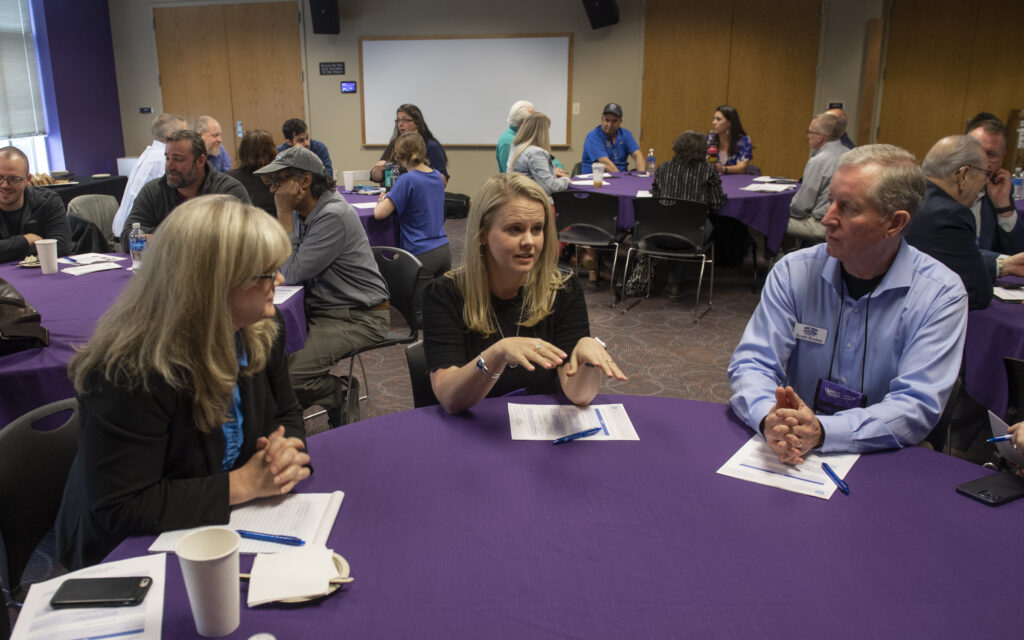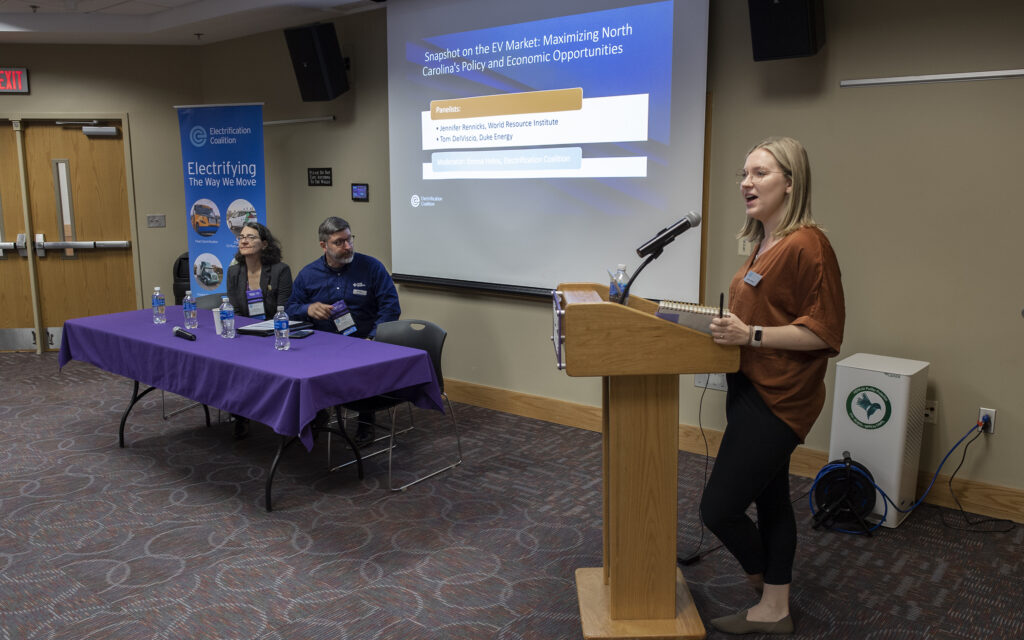In the past two years, the Southeastern U.S. has seen monumental investment and excitement around electric vehicle (EV) adoption and manufacturing. Businesses across the globe recognize that the Southeast market could become an electric mobility hub that drives the country into a new era. But, unless we intervene, the EV revolution might not reach the whole Southeast. EV sales and charging station installation are most prevalent in urban areas, leaving rural communities behind.
Misinformation around EVs runs rampant and it’s hurting the rural communities that stand to benefit most from the transition. Rural households spend 44% more on transportation fuel than urban households, so when geopolitical conflicts across the globe drastically affect oil prices, rural homes are particularly vulnerable. Electrifying transportation helps reduce our oil dependency and plug into a source of energy with existing infrastructure and long-term price stability.
Case Study: Orangeburg, South Carolina

While many rural communities have struggled to get transportation electrification projects off the ground, that experience is not universal. Orangeburg, South Carolina is a great example of a community looking to revitalize and seize the opportunity to be a leader in this movement. Orangeburg City Administrator Sidney Evering recognized that the city was in need of a jumpstart, both for tourists passing through and its own residents. Orangeburg is considered a “persistent poverty community” and is located along interstates 95 and 26, exposing it to higher levels of air pollution.
But Orangeburg is determined to remedy these issues. Recognizing its proximity to major interstates, the town installed two Tesla supercharger sites along the major routes, with a second on I-95 being built soon. Orangeburg was also awarded a $23 million RAISE grant for a new multi-modal transit hub, including EV charging and e-bikes. This serves its downtown business district, both colleges in the town, and a new public-private redevelopment site. The town has prioritized clean transportation for its community, understanding that along with it comes better health outcomes, more stable fuel pricing, lower total cost of ownership for local drivers, and increased revenue from out-of-town EV drivers that stop to charge.
Lessons Learned from Rural Roundtables


In 2023, the Electrification Coalition (EC) hosted a series of roundtables in the Southeast to engage with rural communities and learn more about what barriers they face in implementing EV infrastructure and procuring vehicles. We hosted workshops in Florida, Georgia, and North Carolina in rural communities, and we held a regional workshop in Charlotte, North Carolina to include South Carolina along with the original three states. We heard from local governments, universities, businesses, elected officials, and concerned citizens about the biggest barriers to transportation electrification, and we have pulled together the common themes and challenges:
- Workforce development: Communities in the Southeast are thrilled at the prospect of new, high-paying EV jobs coming to the area. But many see a need for training and outreach programs in high schools and community colleges to inform and prepare residents for these jobs. Many also emphasized the need for retraining opportunities for those working on internal combustion engine (ICE) vehicles and how those workers can be brought into the new industry.
- Cost savings: Several attendees knew that EVs are cheaper to own over the lifetime of the vehicle, but many were surprised by how high savings can be, especially in fleet applications.
- Municipal budget challenges: Attendees from local governments expressed that purchasing EV vehicles and adjusting budget projections to include EVs can be difficult, due to the fact that their operational budgets are often set a year in advance and have little flexibility. They would like to see how other municipalities have handled that challenge, especially in small communities.
- Utility/co-op engagement: Traditionally, most businesses do not work closely with their utilities beyond setting up service and paying their monthly bills, so some expressed concern about coordinating with their utilities to add more electrical capacity to their buildings for EV charging. At several of the events, representatives from local utilities or electrical cooperatives expressed that if anyone is thinking about electrification in the near future, the first step is to call your utility. The utility will have the most up-to-date information about your substation capacity and if it needs to do any line extensions to run power to your project. Several groups also had questions about Time of Use (TOU) rates, a beneficial rate structure to support EV adoption and charging practices, and how they could take advantage of cost savings opportunities.
- Resilience: During winter storm Elliot, many in North and South Carolina experienced rolling blackouts on Christmas. After that experience, and amidst an annual onslaught of hurricanes in Florida, many attendees were excited by the idea of using Vehicle to Grid and Vehicle to Everything technology to make the electrical grid more resilient during natural disasters. When equipped with bi-directional charging capabilities, EVs, especially electric school buses (ESBS) and medium- and heavy-duty vehicles, can send power back to the electric grid in times of need, maintaining the operation of disaster shelters, community centers, medical facilities, emergency services, and more. Additional education and investment are needed, though, as real-world applications feel far off for many.
- Permitting streamlining: Securing building and electrical permits routinely delays the installation of EV charging infrastructure. These delays may increase construction costs and prolong project timelines. As EV charging projects grow over the following decades, permitting challenges pose a risk to meeting EV deployment targets. Local governments can identify policies to reduce delays in permitting and adjust timelines to benefit charging infrastructure installation. For example, Orlando, Florida has modified its permitting process to be much clearer and has the entire process detailed on its website.
- Need for state supplemental funding: While we are experiencing an unprecedented level of federal funding for EV projects, for entities with little or no flexibility in their spending, like school districts or small local governments, sometimes the funding isn’t enough. It is important for states to create supplemental funding opportunities to assist these groups. For example, Michigan legislators established a $150 million fund in its state budget to help cover unmet costs for school districts that are purchasing ESBs. This was designed to be stackable with the EPA’s Clean School Bus grant and rebate programs.
Rural communities can be at the forefront of this transition and take advantage of many of these new funding opportunities from the Bipartisan Infrastructure Law and Inflation Reduction Act, but not without intentional leadership. It takes coordination, planning, and problem-solving outside of traditional operational silos, but the benefits can be significant. Across the U.S. and especially in the Southeast, we’re seeing the beginning of an exponential growth curve for EV adoption and chargers, but that won’t include rural areas unless local and state leaders decide it will.
